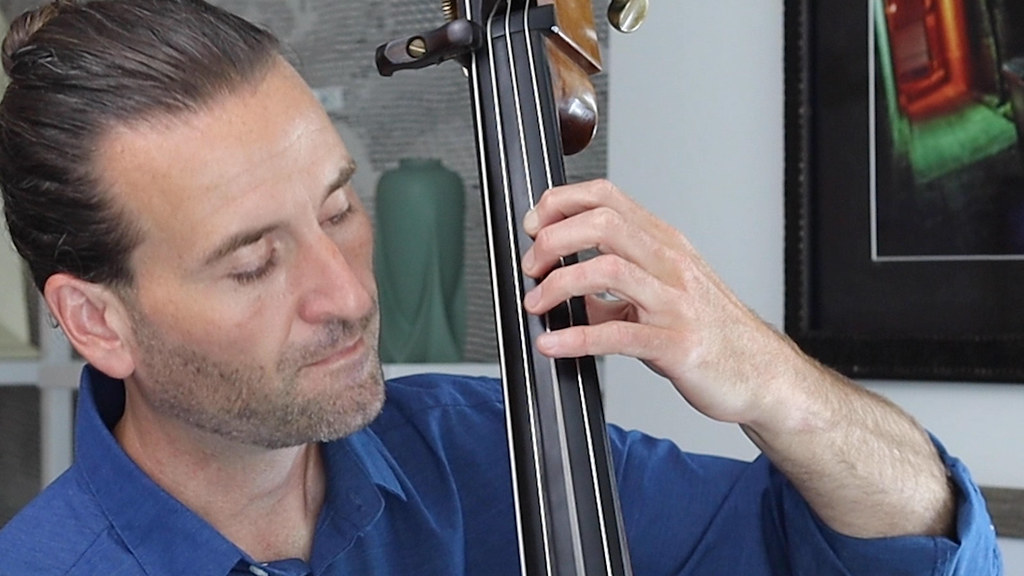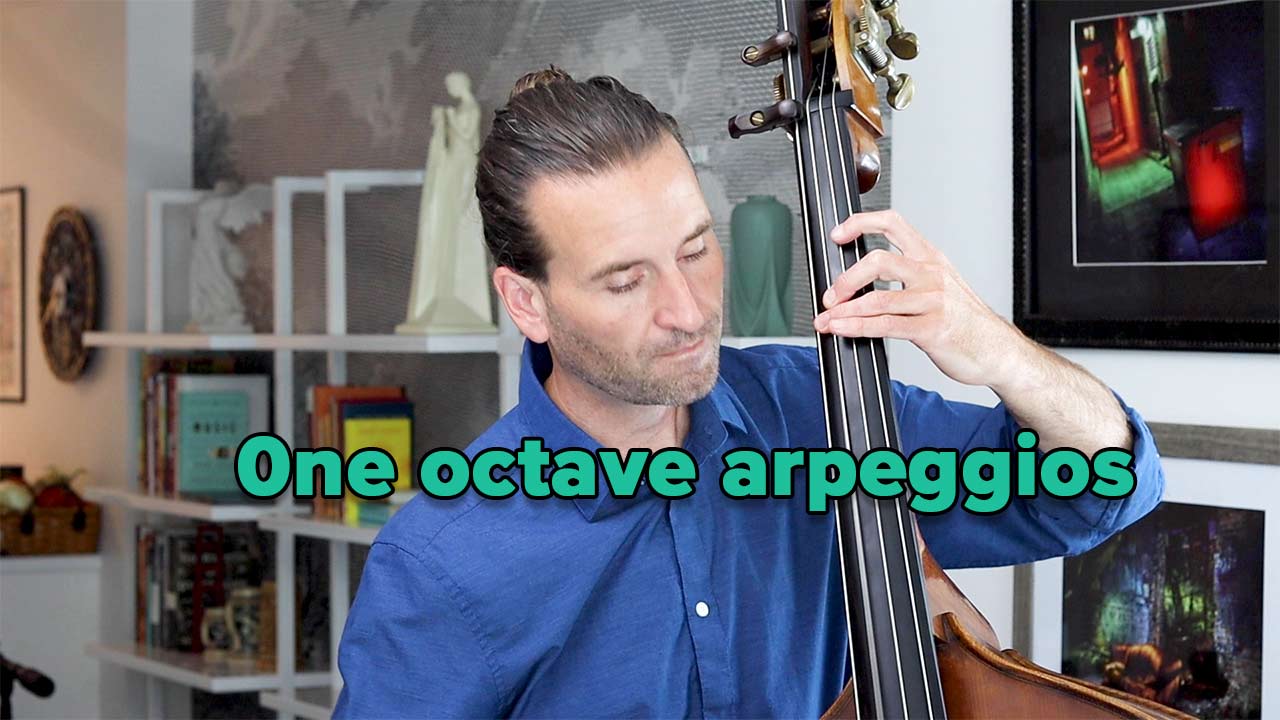We’re continuing our series of beginner materials today with one octave arpeggios.
So far, we’ve covered one octave major scales, one octave minor scales, and learning how to get a good sound with the bow. Each of these past installments has a downloadable PDF, and we’ve got a PDF for one octave major arpeggios for you here as well.
Why practice arpeggios?
I think that a lot of students neglect arpeggio practice in favor of scale practice, which is a real shame. After all, music rarely moves up and down in diatonic scale form without interruption. Arpeggios prepare us for the inevitable leaps that we encounter in music.
For bass players, practicing arpeggios is even more important since we spend so much of our time outlining the basic chord structures in our bass parts and lines.
Whether playing Mozart or Mingus, roots, thirds, and fifths are the bread and butter of bassists.

Arpeggios develop our ability to think laterally.
This means thinking across the strings rather than up and down one individual string.
Since we can only play a whole step without either shifting or changing strings, we bass players need to be able to see patterns across the strings.
When we start out learning double bass arpeggios, we typically want to use as many open strings as possible. These open strings are a great pitch reference and take some of the variables out of the equation.
As we develop our abilities, however, we want to be able to use fingering templates to keep some consistency between different arpeggios. Since they don’t use open strings, these can be a bit more challenging to use at first, but they’ll be what you end up using most of the time in real-world musical situations.
Good fingering guideline: use the same fingering pattern for the same intervalic combinations in a piece.
For major arpeggios, my favorite fingering template is:
- Root – 2nd finger
- Third – 1st finger
- Fifth – 4th finger
- Octave – 4th finger
The challenge with this fingering is that there is either a shift or a string crossing between every single note.
Once mastered, however, this template unlocks a whole set of possibilities for the bass player. Since this pattern will work for all major arpeggios, it eliminates a lot of guesswork when encountering new passages
The materials
In addition to the PDF, I’ve I’ve also got videos for each of the separate arpeggios, plus a video about how to approach arpeggio fingerings in general.
For each key, I’ve got the beginner fingering followed by the template fingering.

For keys like Gb or Db major that have no open strings, the beginner fingering is the template fingering.
For keys with a lot of open strings, the two fingerings may differ quite a bit. You’ll see what I mean as you dig into it.
As with everything, practice it slowly, and aim to to a small amount of material each day at a really high level rather than going for volume and changing through a bunch of stuff haphazardly.
Learn more
Here are some of my favorite resources for delving into arpeggios, both for jazz-oriented and classically-oriented players:
- Rufus Reid – The Evolving Bassist
- Eugene Levinson – School of Agility
- Franco Petracchi – Simplified Higher Technique
What’s next?
The answer is… I’m not sure!
What do you think? Minor arpeggios? More bow stuff? Shifting?
I’m getting requests and starting a list of upcoming topics, so let me know what you’d like to see!
Bass News Right To Your Inbox!
Subscribe to get our weekly newsletter covering the double bass world.



Thank you for this series! Minor arpeggios would be a great next addition!
Super stuff as always Jason. Thank you very much.
You bet–thanks for checking it out!
Will do, Charlie–thanks!
Hello Jason,
first of all thank you very much for all the great material you’re constantly developing, it’s really helpful.
I have a – probably – rather silly question about using drones when practicing arpeggios (or scales): how do you go about it?
As a beginner (which somehow I still am, despite progress with the bow) I used to write down one-note pedals in Finale and play on top of that; I’d usually have a cello play the drone in the higher register to avoid clashes when playing in my lower register. It was a sort of “home-made” solution which simply felt right. I never considered using the 5th though (great tip!).
Nowadays I’m not using Finale anymore so I’d probably either rewrite everything down for Musescore or use something like iReal, but in that case I think I’d be always playing on top of a chord instead of a single note. Just curious to know how you do that since in the example videos you’re not using any drones.
Thank you very much for your time and help, keep up the great work!
Gio
Hi Giovanni–good question! I typically use a drone on the 5th scale degree. The app I use is called Tonal Energy, and I like it because it’s quite loud (no problem hearing when playing) and has a bunch of other useful features. You can also have it drone multiple pitches, so you could also play over an entire chord and choose the octave that works best for you.
I hope that helps!
Hi Jason,
thank you very much for your feedback. I didn’t know about Tonal Energy, so I will definitely check that out.
Thanks again and apologies for the caps lock name but somehow it won’t let me write it differently.
Thanks, Giovanni!